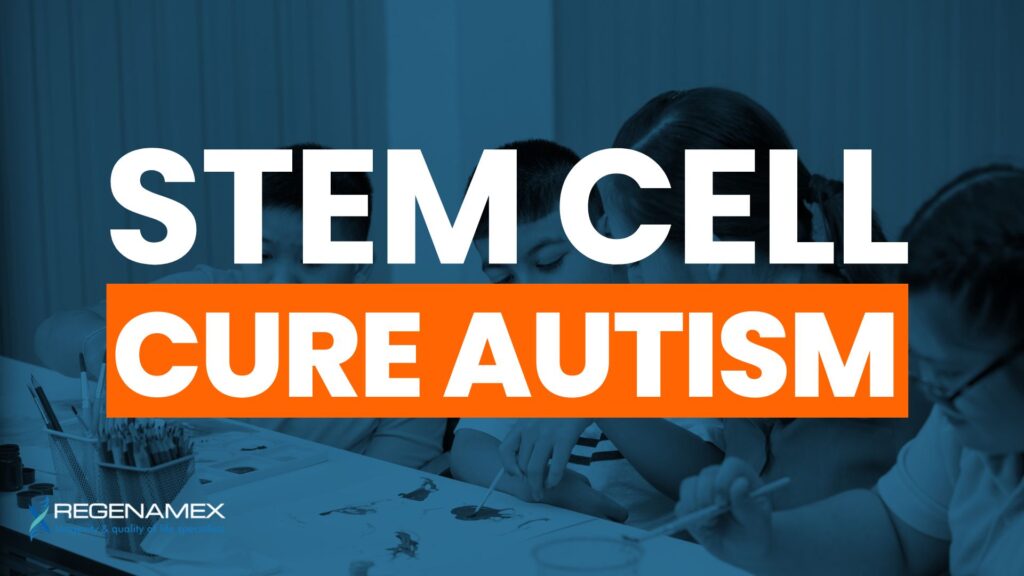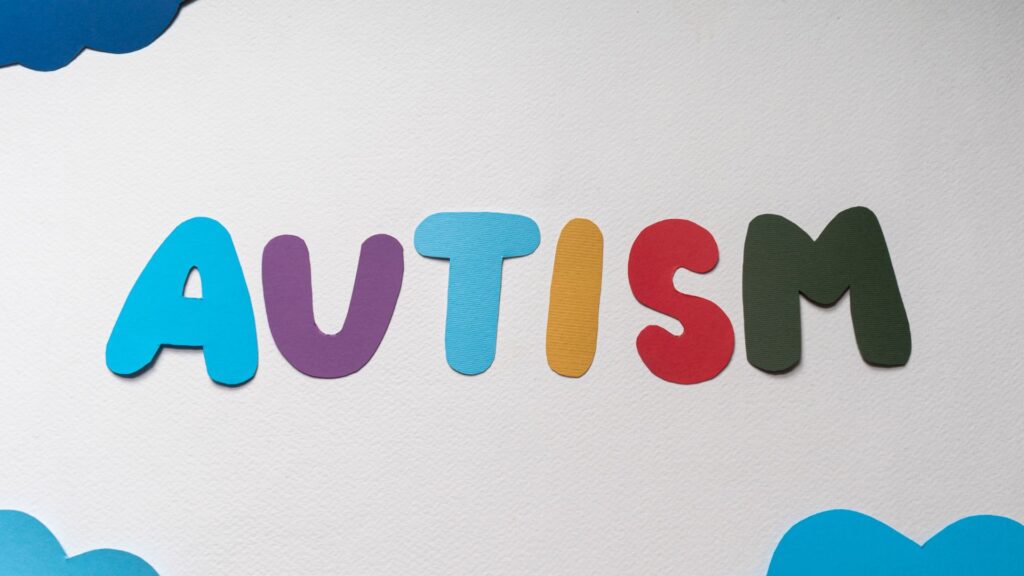
Stem Cells Cure Autism
The concept that stem cells cure autism has sparked hope among families worldwide searching for effective ways to support children and adults on the autism spectrum. While there is no universally accepted “cure” for autism spectrum disorder (ASD), regenerative medicine — and specifically stem cell therapy for autism — is emerging as one of the most promising avenues for addressing core symptoms such as social communication challenges, repetitive behaviors, and cognitive difficulties. At Regenamex, a licensed regenerative medicine clinic in Mexico, treatments focus on mesenchymal stem cells (MSCs) derived from ethically donated placental tissue and Wharton’s jelly. These therapies are carefully regulated under COFEPRIS guidelines to ensure safety, sterility, and effectiveness, offering international patients a credible path to explore advanced options.
For many families, the possibility of using stem cells to help manage autism is not just about symptom improvement but about creating opportunities for a better quality of life. This article will explore how autism stem cell treatment works, the benefits and risks, real-world outcomes, and why patients from around the world are traveling to Regenamex in Mexico to access therapies that may not yet be available in their home countries.
Understanding Autism and the Need for Innovative Treatments

Autism spectrum disorder is a complex neurodevelopmental condition characterized by difficulties in communication, social interaction, and behavior regulation. Traditional interventions, such as behavioral therapy, speech therapy, and medication, often provide partial relief but do not address the biological factors contributing to autism. Families and clinicians have long searched for treatments that go beyond symptom management and target underlying mechanisms.
This is where stem cell research has gained traction. Studies suggest that children with autism may experience chronic neuroinflammation, immune dysregulation, and impaired neuronal connectivity. Mesenchymal stem cells have unique anti-inflammatory, immunomodulatory, and neuroprotective properties that make them highly relevant for addressing these challenges. As a result, interest in whether stem cells cure autism continues to grow, supported by clinical trials and case reports that show promising improvements in language, focus, and social engagement.
How Stem Cell Therapy for Autism Works
Stem cell therapy for autism relies on the ability of MSCs to modulate the immune system, reduce inflammation, and promote repair in the nervous system. When administered intravenously or intrathecally (into the spinal fluid), MSCs travel throughout the body and release growth factors and cytokines that calm overactive immune responses and encourage the repair of damaged or underdeveloped neural pathways.
The therapeutic effects are not about replacing neurons but about creating an environment where the brain can function more efficiently. Parents often report improvements in areas such as:
Increased eye contact and social interaction
Better focus and reduced hyperactivity
Improvements in speech and communication
Decreased repetitive behaviors
Greater emotional regulation
At Regenamex, all stem cell preparations are derived exclusively from placental and Wharton’s jelly tissue, ensuring ethical sourcing and maximum potency. The clinic follows strict COFEPRIS regulation, ensuring that patients receive therapies processed under sterile Good Manufacturing Practice (GMP) conditions.
Benefits of Autism Stem Cell Treatment

The benefits of autism stem cell treatment are becoming increasingly clear as more families share outcomes and more research is conducted. While results vary depending on the severity of autism and individual biology, many patients experience meaningful improvements that enhance day-to-day life.
Key Benefits Include:
Reduction of neuroinflammation: Stem cells help calm brain inflammation, which is often present in children with ASD.
Immune system regulation: Many children with autism show signs of immune dysfunction; MSCs restore balance.
Cognitive and behavioral improvements: Enhancements in memory, learning, and reduced aggressive or repetitive behaviors.
Better communication: Parents frequently report increased vocabulary, improved sentence formation, and more willingness to engage in conversation.
Enhanced quality of life: Families often notice improved sleep, reduced irritability, and stronger social connections.
Traditional Autism Therapies vs. Stem Cell Therapy
| Aspect | Traditional Therapies (ABA, Speech, Medications) | Stem Cell Therapy for Autism |
|---|---|---|
| Symptom Target | Behavioral management, partial symptom relief | Addresses biological factors (immune & neuro) |
| Invasiveness | Non-invasive but limited | Minimally invasive (IV or intrathecal) |
| Long-Term Effectiveness | Ongoing therapy often required | Potential lasting improvements after treatment |
| Focus | Symptom suppression | Regeneration and functional repair |
| Accessibility | Widely available but limited in scope | Available in specialized clinics like Regenamex |
Why Stem Cell Therapy in Mexico Is Growing in Popularity

Access to stem cell therapy in Mexico is one of the key reasons families from the U.S., Canada, and Europe are traveling abroad. In many Western countries, stem cell therapy for autism remains experimental and unavailable to the public, despite growing scientific evidence of its benefits. Mexico, however, has established a regulated environment through COFEPRIS that allows clinics like Regenamex to provide advanced treatments while maintaining international safety standards.
Regenamex offers a unique balance of affordability and quality. Treatments are typically 50–70% less expensive than in the United States, making them accessible for families who would otherwise face financial barriers. The clinic also offers personalized protocols, complementary therapies like PRP and exosomes, and comprehensive aftercare. With modern facilities in Puerto Vallarta and Tijuana, Regenamex has become a trusted destination for international patients seeking credible autism stem cell treatment.
Risks and Considerations of Stem Cell Therapy
When discussing whether stem cells cure autism, it is important to acknowledge potential risks and limitations. The treatment is generally considered safe, with the most common side effects being mild, such as temporary fatigue, fever, or soreness after infusion. Serious complications like infection are rare when treatments are performed in regulated clinics.
The larger consideration is variability in results. Not all patients respond in the same way, and improvements may range from subtle to significant. Families should also be cautious of unregulated providers making unrealistic promises. At Regenamex, transparency is a priority: patients are educated about the potential benefits, risks, and realistic outcomes before beginning therapy.
What to Expect at Regenamex
Families seeking autism stem cell treatment at Regenamex can expect a structured, supportive process designed to maximize comfort and safety.
Initial Consultation – Detailed medical history, assessments, and diagnostic reviews.
Personalized Protocol – Customized treatment plans based on the patient’s age, weight, and health status.
Stem Cell Preparation – MSCs are processed under GMP standards with COFEPRIS oversight.
Treatment Delivery – Administered via IV infusion or intrathecal injection.
Aftercare and Monitoring – Ongoing support, check-ins, and recommendations for complementary therapies.
Long-Term Outlook for Autism Stem Cell Treatment
The long-term outlook for stem cell therapy for autism is promising but still evolving. Early studies and clinical experience suggest that improvements can last months or even years, depending on the individual and whether follow-up treatments are performed. For many families, the ability to witness meaningful changes in communication, behavior, and social engagement is life-changing.
While more large-scale studies are needed to confirm long-term efficacy, Regenamex remains at the forefront of providing safe, ethical, and advanced regenerative treatments. With continuous research and patient-centered care, the clinic is contributing to the growing evidence that stem cells may be a transformative option for autism care.
FAQs: Stem Cells Cure Autism
When people use the phrase stem cells cure autism, they are usually referring to the ability of stem cell therapy to dramatically reduce the core challenges associated with autism spectrum disorder. Research has shown that many children with autism experience chronic inflammation in the brain and irregularities in immune function, both of which can contribute to behavioral and cognitive difficulties. Mesenchymal stem cells (MSCs) have natural anti-inflammatory and immunomodulatory properties that can directly target these biological imbalances. Families who pursue autism stem cell treatment often report improvements in communication, social interaction, and overall quality of life. While the term “cure” may not reflect every outcome, the results can still be life-changing for many.
The mechanism behind stem cell therapy for autism is rooted in the ability of MSCs to restore balance within the body’s immune and nervous systems. Once infused intravenously or intrathecally, the cells migrate to areas of inflammation or dysfunction and begin releasing signaling molecules called cytokines and growth factors. These substances reduce neuroinflammation, encourage neural repair, and create a healthier environment for brain activity. The overall result can include better regulation of emotions, improved language skills, and a reduction in repetitive or hyperactive behaviors. This approach addresses root causes rather than simply managing symptoms, which is why it is gaining so much attention worldwide.
An autism stem cell treatment plan at Regenamex goes far beyond a single infusion. Each protocol is tailored to the patient’s age, medical history, and needs. The core treatment involves high-quality MSC infusions prepared from Wharton’s jelly and placental tissue under strict COFEPRIS regulation. Depending on the case, cells may be administered intravenously or intrathecally for maximum effectiveness. To enhance results, complementary therapies such as platelet-rich plasma (PRP), exosomes, IV nutrition, or hormone balancing may also be included. Aftercare is another cornerstone of the program, with ongoing support to monitor progress and maximize the long-term benefits of the therapy.
Safety is a top concern for any family considering regenerative medicine, and stem cell therapy in Mexico at Regenamex is designed to meet international standards. All cells are ethically sourced from donated birth tissue and processed in sterile laboratories that comply with Good Manufacturing Practice (GMP) regulations. Every step of the process, from preparation to delivery, is overseen by COFEPRIS, Mexico’s health authority, which ensures patient safety. The clinic also uses advanced medical imaging and expert protocols to minimize risks during administration. For families traveling internationally, this level of regulation provides peace of mind that their loved ones are in trusted hands.
The outcomes of stem cell therapy for autism vary depending on the severity of the condition and individual biology. However, families commonly report encouraging changes in their child’s communication, behavior, and daily functioning. Improvements may include longer attention spans, increased vocabulary, greater eye contact, and a noticeable reduction in repetitive or aggressive behaviors. Some children also show better sleep patterns and emotional regulation after treatment. These results often build gradually over weeks or months as the stem cells continue to influence the immune and nervous systems, with many families describing the progress as both meaningful and lasting.
The cost of autism stem cell treatment in Mexico is significantly lower than in countries like the United States or Canada, where access is often restricted or priced beyond reach. At Regenamex, patients typically save 50–70% compared to North American clinics, without compromising on quality or safety. The clinic is transparent about pricing and offers its Fly & Buy program, which simplifies travel and accommodation for international families. This affordability, combined with COFEPRIS oversight and personalized care, makes Mexico one of the most accessible destinations for families exploring stem cell therapy for autism.

